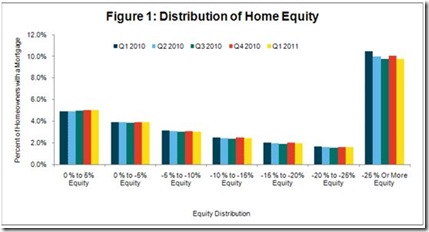
COMMENTARY: by JONATHAN FOXX
Jonathan Foxx, former Chief Compliance Officer of two publicly traded financial institutions, is President and Managing Director of Lenders Compliance Group, the nation’s first full-service, mortgage risk management firm in the country.
I think you may be interested in reading my article in the June 2011 edition of National Mortgage Professional Magazine, entitled:
Ability-to-Repay: Regulating or Underwriting?
The article is Part I of a two-part magazine series.
As you may know, on May 11, 2011, the Federal Reserve Board (FRB) issued a proposed rule (Rule) to implement ability-to-repay requirements for closed-end residential loans.
The Rule implements Section 1411, Section 1412, and part of Section 1414 of the Dodd-Frank Wall Street Reform and Consumer Financial Protection Act of 2010. Comments on the Rule are to be received by no later than July 22, 2011.
But, having published the proposed Rule, the FRB will soon retire from its involvement in this matter, because it will hand over its rulemaking authority in the subject statute to the Consumer Financial Protection Bureau (CFPB) on July 21, 2011.
Thus, the promulgation of the final Rule will be under the aegis of the CFPB.
In this article, I explore some of the salient features of this Rule, noting particularly that, as a revision to Regulation Z (the implementing regulation of the Truth in Lending Act), it requires creditors to determine a consumer's ability to repay a mortgage before making the loan and would also establish minimum mortgage underwriting standards.
The Rule applies to any consumer credit transaction secured by a dwelling, except an open-end credit plan, timeshare plan, reverse mortgage, or temporary loan or ''bridge'' loan with a term of 12 months or less. It includes a closed-end home improvement loan on a vacation residence.
It appears that the Rule applies to purchase money and refinances, but not modifications of existing mortgages.
There is a prohibition on prepayment penalties unless the mortgage is a prime, fixed rate, qualified mortgage, and unless the amount of the prepayment penalty is limited.
As a courtesy, I am sharing this magazine article with you. I hope you enjoy reading it!
Excerpt # 1
Complying with the requirements of the ability-to-repay Rule is essential, because borrowers in a foreclosure proceeding will likely claim that the creditor failed to comply with the Rule as a defense by way of recoupment or set off, without regard to the normal statute of limitations under the Truth-in-Lending Act (TILA).
A violation of the Rule subjects the creditor to the TILA civil monetary penalties, plus the same enhanced civil remedies that apply to violations of TILA's high-cost loan rules, and TILA also would authorize state attorneys general to bring actions for violations of the Rule for a period of up to three years.
Excerpt # 2
A loan that is a covered transaction must qualify, among other things, as a "qualified mortgage" (QM) if the creditor wishes to include a prepayment penalty in the loan.
The Rule provides a presumption of compliance with the ability-to-repay requirements if the mortgage loan is a ''qualified mortgage,'' which does not contain certain risky features and limits points and fees on the loan.
Furthermore, one feature of a higher-risk mortgage loan (i.e., subject to enhanced appraisal requirements under Dodd-Frank § 1471) is the loan may not be a QM. (Under Dodd-Frank § 941, a "qualified residential mortgage" may not be broader in scope than a QM as defined in the Rule.)







